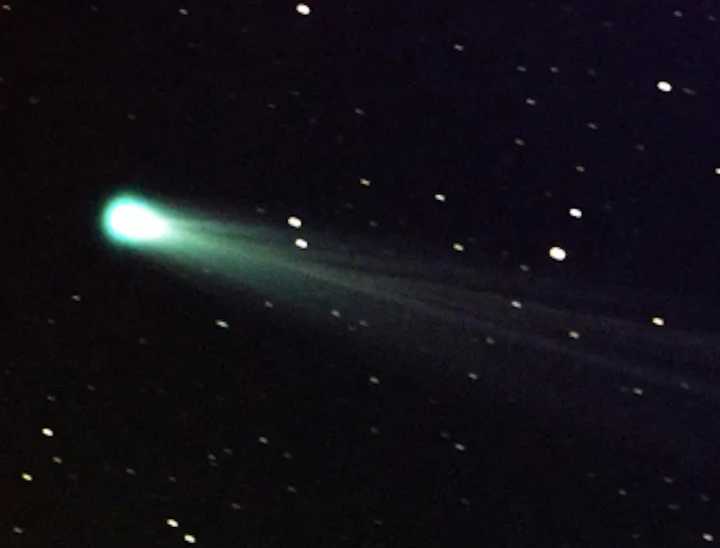A newly discovered comet is about to make its closest pass by Earth later in the week and is expected to be visible through the end of October.
Comet Tsuchinshan-ATLAS, or C/2023 A3, which was first identified last year, is expected to be especially vivid, and its brightness could even compare to Jupiter, according to The New York Times.
The comet will be closest to earth -- about 44 million miles, mind you -- on Saturday, Oct. 12, according to NASA.
“This one is, I would say, a once-in-a-lifetime opportunity,” said astrophysicist Gianluca Masi, the scientific director of the Virtual Telescope Project, told The Times. “This comet is for everyone.”
The comet's head, called the coma, is about 130,000 miles in diameter, and its tail is about 18 million miles long, according to space.com.
“Comets are more fragile than people may realize, thanks to the effects of passing close to the Sun on their internal water ice and volatiles such as carbon monoxide and carbon dioxide,” said NASA astronomer Bill Cooke. “Comet Kohoutek, which reached the inner solar system in 1973, broke up while passing too close to the Sun. Comet Ison similarly failed to survive the Sun’s intense heat and gravity during perihelion in 2013.”
Star gazers should be able to see the C/2023 A3 comet with their naked eyes on Thursday night, Oct. 10, and again during the week and at times through October, NASA says.
Clear skies are necessary, of course.
Cooke recommends that you choose a dark vantage point just after full nightfall and look toward the southwest, about 10 degrees above the horizon.
NASA says after its October surprise, the comet won't be visible again for about 800 years.
Check back to Daily Voice for updates.
Click here to follow Daily Voice Cloverly-Colesville-Fairland and receive free news updates.
